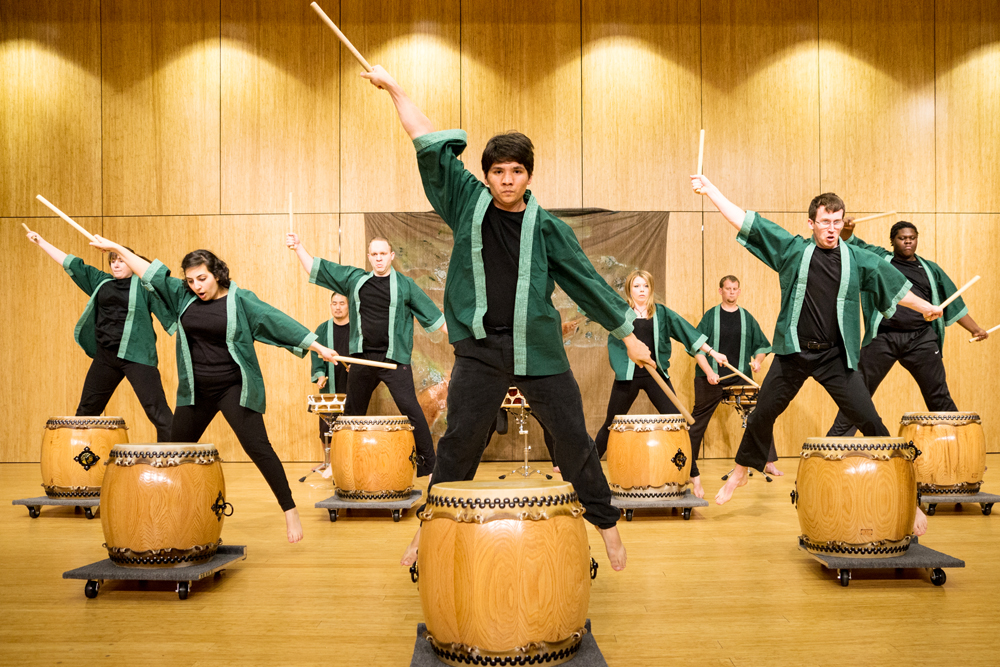The Center for Japanese Studies is joining forces with the School of Music and Department of World Languages and Literatures for the fourth annual Drama! Dance! Drums! performance on June 3 at 7:30 p.m. This free event is open to the public and will be held in the Lincoln Recital Hall in room 75.
Drama! Dance! Drums! is a collaborative artistic performance showcasing traditional Japanese theater and music in the form of taiko, kabuki and Japanese dance.
This year, several original student compositions will be performed, ranging from dramatic production to musical composition, including a brand new hybrid play focusing on social and gender transgressions. Professors Wynn Kiyama and Laurence Kominz are the dynamic duo behind the event.
Taiko drums are a traditional Japanese percussion instrument, documented both historically and in folklore. The drums can vary in size, though most Western audience members are accustomed to seeing larger scale drums with corresponding dance movement.
Wynn Kiyama, assistant professor of musicology and ethnomusicology at Portland State, is excited to be showcasing a large drum the department recently purchased, called an odaiko drum, that will be used in a debut piece.
Kiyama has 14 students who will be participating in this year’s ensemble drum performance.
“Around the winter quarter I start to develop compositions written by our students,” Kiyama said. “This is a showcase of the diversity of musical activities in the school, [but also] a culmination of their work in class; they’re putting together theater scenes and dance sequences in 10 weeks.”
Kiyama emphasized the amount of work and dedication his students have been putting into this project, but also the amount of fun and cultural exploration that takes place when embarking on a project like Drama! Dance! Drums!
“At its root, this is a performance opportunity for our students,” Kiyama said.
Professor Laurence Kominz is also looking forward to the big debut.
“This year there’s two aspects that I haven’t done before, maybe even more,” Kominz said. “Even though this is traditional, doing something new within that world is really exciting. [This is our] first time doing a kabuki highlights play.”
The term kabuki refers to the traditional blend of Japanese drama and dance. It is also characterized by its elaborate makeup, costumes and content of the performance.
“We have fabulous costumes lent to us by the University of Hawaii this year,” Kominz said. “[They’re] more splendid than any other show I’ve ever done before. We’re able to costume 10th and 11th century Japan, which is very exciting.”
Even more exciting than the exquisite costumes is the opportunity to highlight several scenes for a main-stage play the theater department will produce in the fall.
This is a chance to entice audience members to stay updated for the full-length play, which promises to be even more outstanding than the Drama! Dance! Drums! event.
“We really want to keep people thinking long after this event is over,” Kominz said. “Kabuki is going to be gorgeous and spectacular—not Japan’s subdued aesthetic performance. There’s no quiet moment in this show. This will be a vibrant, traditional Japanese performance. Everything we’re doing is going to be spectacular.”






